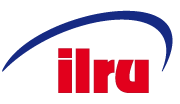Financial Management for Centers for Independent Living: Regulations and Beyond (12.5 Hours)
About the Training
The ILRU T&TA Center for Independent Living trainers John Heveron and Paula McElwee, nonprofit and financial management experts, will help you understand best practices in financial management and know how to best operate in a changing environment and adhere to new guidance. Whether you are new to nonprofit accounting or are looking to bolster your Center’s financial policies and procedures, you will learn exactly what you need to do to strengthen your Center, effectively manage finances, and ensure compliance with federal regulations. Led by John Heveron, a certified CPA with over 40 years working with non-profits and CILs, and Paula McElwee, IL-NET Technical Assistance Coordinator, this workshop will give you the skills and resources that are essential to sound financial management in a thriving Center for Independent Living.
Learning Objectives
You will learn:
- The environment of accountability, good governance and ethical practice for nonprofits, and the key principles that affect CILs
- What centers must do to survive scrutiny, to secure resources, and to make sure those resources are used properly
- The policies and procedures your CIL must have in place
- Budget development cost allocation and documentation, including payroll
- Record keeping
- What things can go wrong in nonprofits and how policies and internal controls can prevent them
- Latest internal control requirements and principles – five categories of controls and 17 principles
- Entity wide controls versus specific controls
- 45 CFR Part 75 Uniform Administrative Requirements, Cost Principles and Audit Requirements for HHS Awards
- The Workforce Innovation and Opportunity Act of 2014 (WIOA) as detailed in 45 CFR Part 1329.
- Technical guidance from the U.S. Department of Health and Human Services, Administration for Community Living (ACL)
- Special requirements for certain types of costs and allowability of other types of cost and cost allocation
- The auditing standards for nonprofits
- The basics of lobbying rules for nonprofits
- Compliance and Outcome Monitoring Protocol (COMP) Tool – Evaluation tool used for onsite reviews of Centers for Independent Living conducted by ACL
- Annual filing requirements
- Sales tax and payroll tax requirements
- How to identify risks and the types of risks commonly found in nonprofits
- Reassessing exposure as risks change
- Maintaining proper security and quality with increased technology and outsourcing
- How to prevent embezzlement
- Cybersecurity risks and defenses
- Tools and techniques for hiring qualified people and employee retention in tight job markets
- Nonprofit financial reports and key reports for board members
Purpose and Target Audience
This training will instruct participants in identifying and implementing good practices for accountability and governance, and assist them in complying with key regulations for nonprofits.
Executive Directors, fiscal staff, program managers, and board members interested in CIL and nonprofit financial management will benefit most from this training. Staff and members of SILCs may also benefit.
Video/Training Materials/Resources
Below are links to the recorded sessions, the PowerPoint presentations, text transcript of the presentations, and a link to additional resources on CIL financial management. To view individual presentations, follow the links below. To view a catalog of presentations from this training visit,
https://ilru.mediasite.com/mediasite/Catalog/catalogs/mediasiteadmin-financial-management-for-centers-for-independent-living-regulations-and-beyond.
Module 01: Framework for Accountability; Updated Fiscal Procedures Manual
- View the Video of Module 01 (01:28:23)
- PowerPoint Presentation (pptx)
- Transcript of the Presentation (txt)
Module 02: Updated Fiscal Procedures Manual, Internal Controls; Procurement and Allowability of Costs; and CILs Responsibility for Security
- View the Video of Module 02 (01:59:05)
- PowerPoint Presentation (pptx)
- Transcript of the Presentation (txt)
Module 03: Procurement, Allowability of Costs and Lobbying; Documentation of Expenditures; Cost Allocation Methods; Documenting Payroll Allocation
- View the Video of Module 03 (02:00:30)
- PowerPoint Presentation (pptx)
- Transcript of the Presentation (txt)
Module 4: Direct and Indirect Costs
- View the Video of Module 04 (01:55:33)
- PowerPoint Presentation (pptx)
- Transcript of the Presentation (txt)
Module 5: Procurement Policies and Budget Development; Cash Management, Drawdowns; Repayment of Unallowable Costs; Understanding Financial Statements
- View the Video of Module 05 (01:58:15)
- PowerPoint Presentation (pptx)
- Transcript of the Presentation (txt)
Module 6: Required Filings; Employees vs. Contractors; Grantee/contractor vs. Subrecipient
- View the Video of Module 06 (01:48:53)
- PowerPoint Presentation (pptx)
- Transcript of the Presentation (txt)
Module 7: Employees vs. Contractors vs. Volunteers; Subrecipient Risk Assessment
- View the Video of Module 07 (01:17:53)
- PowerPoint Presentation (pptx)
- Transcript of the Presentation (txt)

